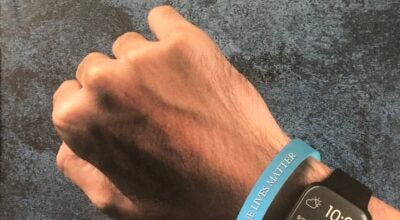A bird’s eye view: Dec. 1, 2018
Published 3:10 pm Saturday, December 1, 2018
It’s almost time for the Christmas Bird Count.
Each year, in the Western Hemisphere, the Christmas holiday season marks an event that many bird watchers, both amateur and scientists, look forward to — The National Audubon Christmas Bird Count (CBC). Perhaps you have heard of this event or even participated in previous CBCs. But just what is the Christmas Bird Count, what is actually done and how did it get started?
As Julie Andrews would say, let’s start at the very beginning since it’s a very good place to start. In the 1800s it was a Christmas holiday tradition for hunters to choose sides, go out into the fields and woods with firearms and see which team could kill the biggest pile of feathered or furred animals. They called this the Christmas Side Hunt. I guess it was supposed to be fun.
But did you know that even back then some observant people noticed a decline in bird populations? Conservation was in its infancy of course, but the idea was gaining momentum. An ornithologist by the name of Frank M. Chapman proposed that on Christmas Day in 1900, instead of killing birds, that a count or census be taken. With 27 birders and only 25 count circles from Canada to California, the Christmas Bird Count was thus born.
Naturally there are established rules and parameters. But basically, a count circle is a 15-mile diameter circle from a given point. Set routes are driven or walked by volunteers. Every bird they see or hear is identified as to species and counted all day. Care is taken not to count any bird twice. Results are tallied up by a leader and then submitted to a state-wide coordinator. Count dates are from Dec. 14 through Jan. 5. Locally the Lake Blackshear CBC will be held on Jan. 3, 2019, and I am so looking forward to it. Allow me to explain.
Because the Lake Blackshear CBC circle lies in two counties, Crisp and Sumter, my team will meet at a designated location on the Sumter County side well before sunrise and proceed to a friend’s boat dock on the big water. At this location. We usually find a host of aquatic birds roosting in large flotillas on the lake such as ducks, geese, grebes, loons, and gulls. Powerful optics are used like spotting scopes to count these distant birds. Just before sunrise the birds typically take off for parts unknown to feed. We then continue on our route stopping at different locations and yards, for which I have secured permission over the years, to look for birds.
Ornithologists use the data gathered to determine bird population increases or declines. They can also determine if certain species are expanding their traditional range or not.
By the end of the day we are of course weary from having so much fun. Our tally of different bird species numbers around 90 depending on the year and whether the lake has been drawn down or not. As you know, different habitats yield different species.
Tom Hanks, in the movie Forest Gump, stated, “My mama always said life is like a box of chocolates. You never know what you are gonna get.” A day of birding is similar; you never know what rare or exotic species might have made its way here. Here’s an example.
As I mentioned in my October column regarding the possibility of a winter time hummingbird, I am happy to report that what appears to be a hatch year, male, Rufous Hummingbird has taken up residence in our Americus backyard. Don’t think that this can’t happen to you. It can! Just make sure to keep a clean feeder and change out your sugar water like you always do. And of course, watch for hummingbird activity.
Hummingbirds have the ability to place their bodies into an almost hibernation-like state known as torpor. They slow their metabolism, circulatory and respiratory systems at night to conserve energy and endure the cold winter temperatures. When forecasted temperatures are below freezing at night, I bring my sugar water feeder inside so it doesn’t freeze solid. It never ceases to amaze me when I observe these tiny creatures while feeding.
Even in the depths of winter birding can be enjoyable. Remember to take time to enjoy our native birds and please keep your cats indoors.
Phil Hardy is a bird watcher and bird photographer. He lives in Americus.




